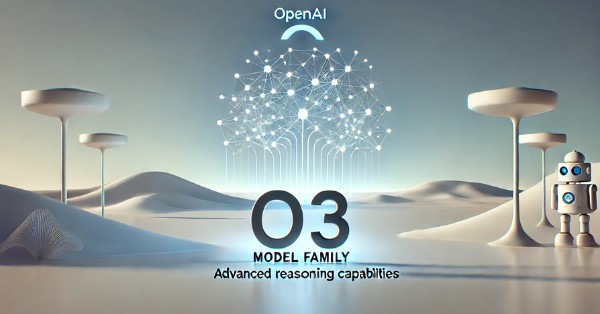OpenAI has introduced its latest breakthrough in AI technology, the ‘o3’ reasoning models, heralding a significant advancement in the journey toward Artificial General Intelligence (AGI). Acting as the successor to the o1 reasoning models, o3 is poised to set new benchmarks in AI capabilities. Despite its strides, OpenAI remains cautious about labeling it as AGI-ready. Alongside the flagship o3 model, OpenAI has also launched the o3-mini, a compact version designed for specialized tasks.
What Are the o3 Models?
The o3 reasoning models represent a major step forward in AI technology. Unlike their predecessor, the o1 models, which debuted just three months ago, the o3 models demonstrate capabilities that are inching closer to AGI in specific contexts. OpenAI’s cautious optimism stems from the fact that while o3 may not fully achieve AGI across all parameters, its ability to approach AGI in certain scenarios is remarkable.
The series includes two versions:
- o3: The primary model aimed at general reasoning tasks.
- o3-mini: A smaller, task-specific model optimized for focused applications.
Interestingly, the models skipped the nomenclature ‘o2’ due to trademark issues, adding a unique twist to their branding.

Evaluating o3’s AGI Potential
To gauge the o3 models’ AGI capabilities, OpenAI collaborated with François Chollet, the creator of the Keras deep learning framework and founder of the ARC prize. Chollet assessed the models using the ARC-AGI benchmarks, designed to test AI systems’ reasoning skills.
In a statement shared on X (formerly Twitter), Chollet commented on the o3’s capabilities:
“Is this AGI? While the model is impressive and a significant milestone on the road to AGI, I don’t believe it qualifies as AGI. There are still many ARC-AGI-1 tasks that o3 cannot solve, and ARC-AGI-2 remains extremely challenging. This highlights the potential to develop unsaturated benchmarks that humans can solve easily but AI cannot — without requiring specialist knowledge.”
This analysis underscores that while o3 is a notable advancement, there is still a long way to go before AI can truly replicate human-like intelligence across all domains.
Availability and Timeline
As of now, neither the o3 nor o3-mini models are available for public use. OpenAI has announced that safety researchers can apply for a preview of o3-mini starting today, with broader previews expected to roll out in the coming months.
According to OpenAI CEO Sam Altman, the current plan is to launch o3-mini toward the end of January, followed by the release of the full o3 model. The rapid development cycle of the o3 models, coming just three months after the release of o1, showcases OpenAI’s accelerated pace of innovation.

The AI Industry’s Race for Reasoning Models
The unveiling of o3 has sparked a flurry of activity in the AI industry. Ever since OpenAI introduced the o1 reasoning models, both tech giants and startups have rushed to develop their reasoning AI systems.
For instance, Google recently announced its experimental reasoning AI model, Gemini 2.0 Flash Thinking, available on its AI Studio platform. While promising, early evaluations suggest that Google’s model is still far behind OpenAI’s o3 in terms of reasoning capabilities.
This competitive landscape highlights the growing focus on reasoning models as the next frontier in AI development. OpenAI’s rapid innovation cycle and o3’s potential to inch closer to AGI set it apart in this crowded field.
The Road Ahead
OpenAI’s o3 reasoning models mark a significant milestone in AI research, offering a glimpse into the future possibilities of AGI. While the models are not yet AGI-ready, their ability to achieve AGI-like performance in specific instances represents a paradigm shift.
As the AI industry races to develop more advanced reasoning models, OpenAI’s o3 models set a high bar for innovation. The launch of these models not only underscores OpenAI’s leadership in the field but also raises important questions about the ethical, technical, and societal implications of achieving AGI.
The journey to AGI is far from over, but with the introduction of o3, OpenAI has taken a bold step forward. The coming months will reveal whether this technological leap can maintain its momentum and how it will shape the broader AI landscape.

